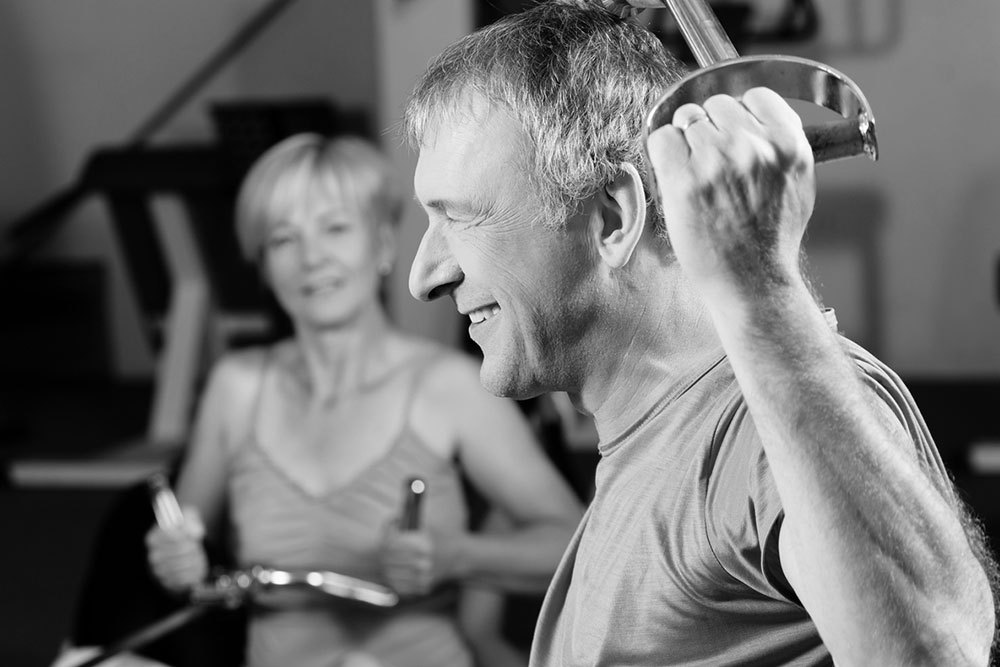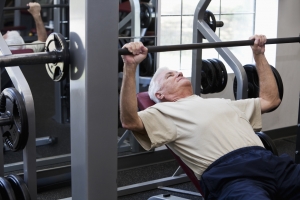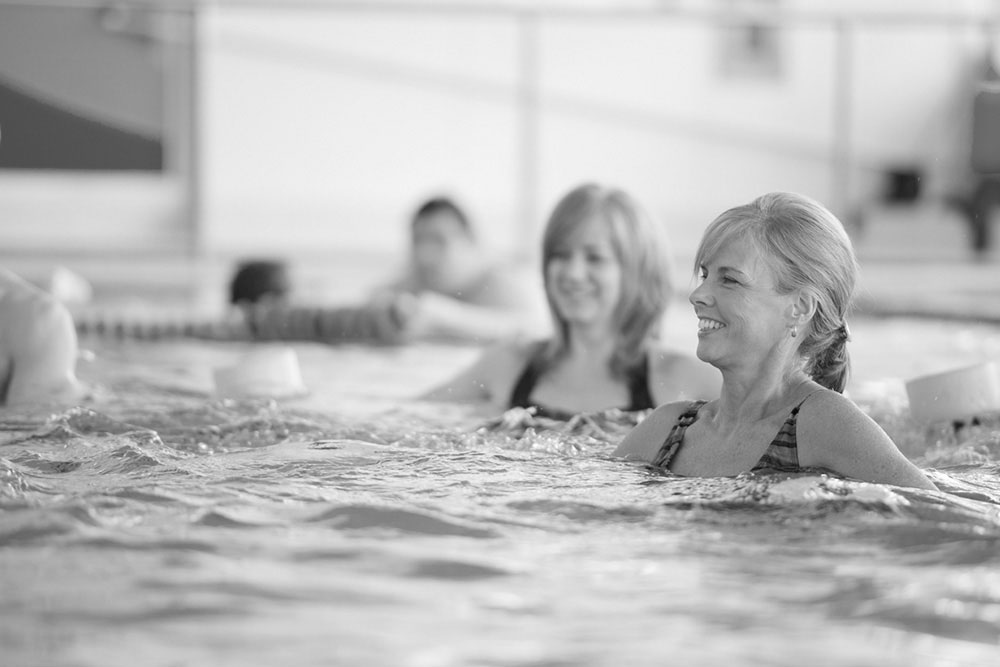Resistance Training For Parkinson’s Disease

Sara Thompson – M.Sc. in Exercise Science
Parkinson’s disease (PD) is second only to Alzheimer’s in being the most common neurodegenerative disease (L. A. B. MS & MS, 2013). While Parkinson’s Disease is most commonly associated with motor impairments, research suggests that cognitive abilities are also impaired among individuals with the disease.
As such, Parkinson’s Disease has become relevant in psychological and neuroscience research.
Dopamine is a neurotransmitter, important for motor control and PD is characterized by loss of dopamine-secreting cells (Dickson, 2007). Patients with PD present symptoms such as tremor, bradykinesia (slow movement), postural instability, and stiffness (Kwakkel, de Goede, & van Wegen, 2007).
There are varying degrees and types of symptoms, leading to two main subtypes of PD: 1) Predominantly akinesia (loss of voluntary movement) and rigidity (AR-subtype), and 2) resting tremor (T-subtype) (Zetusky et al., 1985).
The most common therapy for this disabling disease is medication aimed to restore the levels of dopamine in the brain. While effective, this form of treatment has an expiry date, as the progressive nature of the disease causes the effects of the medication to wean over time (L. A. B. MS & MS, 2013).
This can eventually lead to unmanageable symptoms and increased side effects from the medication, not to mention increased medical expenses.
Related Article: Parkinson’s Disease & Cycling Benefits
Alternate Forms Of Therapy
Alternate forms of therapy, namely exercise, are being introduced to improve function and mobility in PD.
Resistance Strength Training
Resistance training is the most common and most effective exercise for strengthening the shoulder, and researchers have asserted that oscillation exercises may also be beneficial. Biomechanical oscillation is a training method that employs low amplitude and low-frequency stimulation to exercise musculoskeletal structures to improve muscle strength and flexibility.
Combining a mix of resistance and oscillation exercises produces enhanced structural changes to the muscles that stabilize the shoulder.
When creating an exercise program for the upper body, the inclusion of oscillation exercises will enhance the strength and thickness of scapular stabilizing muscles, which work to support shoulder stabilizing muscles, increasing overall strength and wellness
Resistance strength training is often studied as patients with PD have significantly diminished muscle strength compared to healthy individuals (Lima et al., 2013). Recent research suggests that resistance training can improve function and quality of life in PD patients (Dibble, Hale, Marcus, Gerber, & LaStayo, 2009; Hass, Buckley, Pitsikoulis, & Barthelemy, 2012).
However, exercise recommendations are still inconclusive, partially due to the fact that limited studies have looked at the effects of progressive resistance training on the different subtypes of PD. Therefore, Santos and colleagues aimed to study the effects of progressive resistance training on postural stability, gait and quality of life in individuals with AR-subtype PD (Santos et al., 2017).
Related Article: Don’t Resist Resistance Training
The Study
In this randomized controlled trial, 28 PD patients with AR-subtype were divided into an exercise or control group.
First, they were assessed for postural stability, gait, freezing of gait, motor portion of the disease rating scale, and quality of life before training, after training, and 4 weeks after the end of the training period.
Next, the control group was instructed to continue with their usual exercise routine. The exercise group participated in 16 exercise sessions over 8 weeks. The exercise sessions were 60-70 minutes and focused on the main flexor and extensor muscles of the upper and lower body (knee extension, knee flexion, chest press, lat pull-down, arm row).
Finally, the amount of weight that the participants lifted was individualized based on the participants’ calculated one repetition maximum (the weight at which an individual can complete one full repetition). The weight was then gradually increased throughout the 8 weeks, such that participants were lifting a greater percentage of their one repetition maximum.

The Results
The 8-week progressive resistance-training program improved several, but not all parameters of motor control. For example, the exercise group improved neuromuscular control during maintenance of posture, however postural stability and reaction to maintain balance was not improved.
During gait analysis, participants in the exercise group improved the speed of their fast rhythm walking but didn’t increase the speed of their preferred rhythm walking.
There was also no improvement in a freezing of gait (sudden inability to continue walking) or in the motor portion of the disease rating scale. Still, progressive resistance exercise significantly improved participants’ perceived quality of life.
Specifically, they were less fatigued, their appetite improved, had better sleep, the pain was decreased, and improved efficacy of daily activities. Additionally, these participants enjoyed the training and felt stronger due to it.
Takeaway
This is the first study that has assessed progressive resistance training in the akinesia and rigidity (AR) subtype of Parkinson’s disease.
While there weren’t improvements in all measures of motor control, the results are still very encouraging.
The authors argue that the training period might have been too short to elicit significant benefits in some parameters. Alternatively, the training load might have been too light to stimulate neural adaptations. Indeed, when asked about the training, most patients reported that it was “light” or “very light” in intensity.
However, the most significant finding is that participants reported improved quality of life during and after the training. As Parkinson’s disease is often debilitating in nature, this is a great progression for the treatment of this disease.
Support for exercise as an important part of managing Parkinson’s symptoms continues to abound in current scientific research. While more information is needed about how exercise helps, it is clear that is does and that high-intensity exercise has more profound effects, at least at the early stages of the illness.
Patients should consult with a physician and an exercise physiologist to identify target heart rates and outline a plan to include high-intensity aerobic exercise into their routine. Aim for a heart rate >80% of 220-age for 30 minutes 4 times a week and use a buddy, workout class, appropriate gear, or trainer to help you stick to your program!
References
MS, L. A. B., & MS, M. N. E. (2013). Effects of Resistance Training for People With Parkinson. Journal of the American Medical Directors Association, 14(4), 236–241.
Dickson, D. V. (2007). “Neuropathology of movement disorders”. In Tolosa E, Jankovic JJ. Parkinson’s disease and movement disorders. Hagerstown, MD: Lippincott Williams & Wilkins. pp. 271–283.
Kwakkel, G., de Goede, C. J. T., & van Wegen, E. E. H. (2007). Impact of physical
therapy for Parkinson’s disease: a critical review of the literature. Parkinsonism and
Related Disorders, 13, S478–S487.
Zetusky, W. J., Jankovic, J., Pirozzolo, F. J. (1985). The heterogeneity of Parkinson’s disease: clinical and prognostic implications. Neurology, 35, 522-526.
Lima, L. O., Scianni, A., & Rodrigues-de-Paula, F. (2013). Progressive resistance
exercise improves strength and physical performance in people with mild to
moderate Parkinson’s disease: a systematic review. Journal of Physiotherapy, 59(1),
7–13.
Dibble, L. E., Hale, T. F., Marcus, R. L., Gerber, J. P., & LaStayo, P. C. (2009). High
intensity eccentric resistance training decreases bradykinesia and improves
quality of life in persons with Parkinson’s disease: A preliminary study.
Parkinsonism and Related Disorders, 15(10), 752–757.
Hass, C. J., Buckley, T. A., Pitsikoulis, C., & Barthelemy, E. J. (2012). Progressive
resistance training improves gait initiation in individuals with Parkinson’s disease.
Gait & Posture, 35(4), 669–673.
Santos, L., Fernandez-Rio, J., Winge, K., Barragan-Perez, B., Gonzalez-Gomez, L. et al. (2017). Effect of progressive resistance exercise in akinetic-rigid Parkinson’s disease patients: a randomized controlled trial. European Journal of Physical and Rehabilitation Medicine, Mar 13 [Epub ahead of print].
You Might Like:










